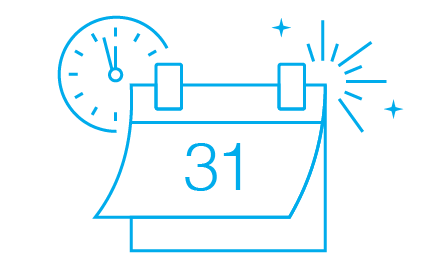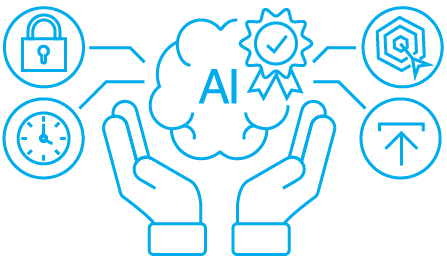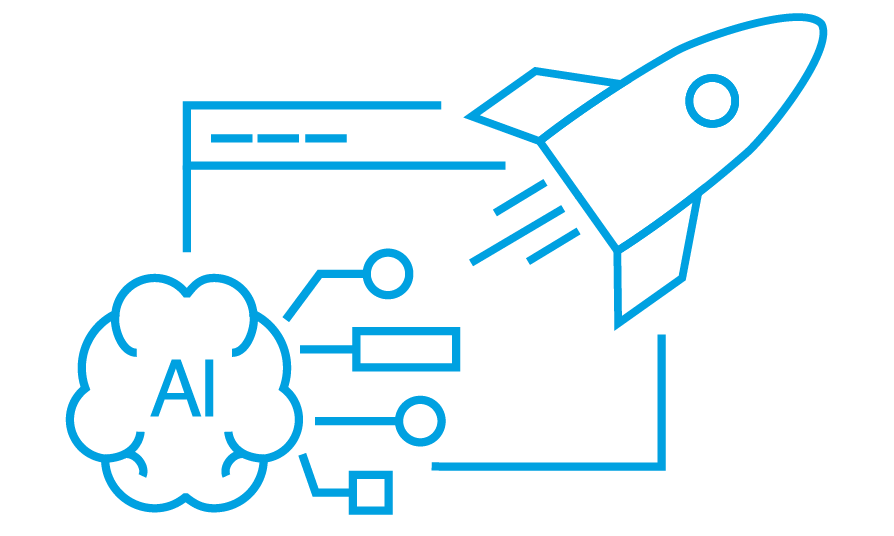- 1st party data definition
- First party data - examples
- How to use 1st party data
- Benefits of using 1st party data
- Using 3rd party data with 1st party data
- How to collect first party data
- First party data vs second party data
- 1st vs 3rd party data
- 1st, 2nd and 3rd - integrating data on DMP
Overview:
- 1st party data definition
- First party data – examples
- How to use first party data?
- Benefits of using 1st party data
- Using 3rd party data with 1st party data
- How to collect 1st party data?
- 1st party data vs 2nd party data
- 1st vs 3rd party data
In the digital era, marketers collect first party data to gain insights about their users. It is the data that comes from their own sources, such as app or website. How marketers can benefit from using first party data and what differences are between 1st, 2nd and 3rd party data?
1st party data definition
First party data is the information that companies can collect from their own sources. In other words, every information about customers from both online and offline sources, such as the company’s website, app, CRM, social media or surveys is first party data.
According to eMarketer, 85% of US marketers and 75% of respondents in Western Europe said that increasing their use of first-party data is a high priority. For marketers, it is a really valuable source of users data.

The first party data can include information as following:
- demography
- visited websites & interactions
- purchase history
- interests
- time spent on website
- and many more
What’s important – first party data can be collected for free and the company which owns the data has all needed customers’ consents. In the GDPR era it is highly important. By using 1st party data, you can deliver your users personalized experiences and display them relevant ads.
First party data is one of the most valuable data, so every company should consider to collect the data and make profits from it. The information is collected for free, which makes it really cost-effective and can be easily segmented and monetized by using a Data Management Platform.
First party data – examples
From first party data you can build any segments that are available on digital market. In other words, if you run an online shop with T-shirts, you can create, for example, users who often buy women T-shirts, users who spend over 200 $ monthly or users only from the US.
Examples of first party data, are similar to the data points from which third-party data segments are created. It contains: timestamps, visited URLs, localization, IP, browser’s language etc. From this data points and other data that you collect through your website, you can build segments such as:
- Demography – Age 18-24
- Interests – Political News
- Purchase Intentions – Women T-Shirts – White
- Demography – UK
How to use 1st party data
Basically, by using first party data you can deliver your current visitors personalized experience and send them messages they expect. What’s more, you collect high-quality data and be sure that you comply with privacy rules. You can gain all consents, e.g. through your website or app.
Let’s take a look at three benefits of using first party data in company.
1. Create personalized experience

Gathering first party data makes it easy to know your users and divide them into specific groups. You can analyze your web traffic and create audiences who are looking for specific products or are interested in a particular topic, such as sport or automotive. It enables you to create highly personalized messages and increase the effectiveness of your marketing efforts. Read more about audience targeting on our blog.
2. Comply with GDPR

As we mentioned, 1st party data can be the most transparent because you own it and you are responsible for collecting all necessary consents. Your law department can give you the best instructions what information you should give your users to process their data in compliance with privacy regulations. Basically, users rather agree to process their data by your company because it is usually necessary for making a purchase.
In the age of GDPR, it is extremely important to collect data legally and 1st party data is one of the most trusted and valuable users’ data. Read more about how to process users data and comply with GDPR.
3. Get insights about your audience

Collecting first party data gives you a chance not only to store data but also to look deeply into your users’ profiles. By using technological platforms, such as DMP, you can integrate data about your users from various sources (website, surveys, apps, games) to create a full view of your customers. What he or she likes/dislikes? Which products your users wants to buy? Which websites do they visit after leaving your page?
Marketers often enrich their data by external sources (3rd party data), to fill the gaps in their clients’ profiles. For example, if they own only email address, by integrating it with 3rd party data, they can gain knowledge about users’ interests, demography or purchase intentions. It is really useful in planning future campaigns. To learn more about Audience Reports, check our article: How to use Audience Reports to get insights about users?
Benefits of using 1st party data
First party data is crucial for publishers. Thanks to digital information about their users, media can send them personalized content, monetize their data, or offer them paid plans. Below we list the most important benefits of using first party data:
1. Collecting data in compliance with GDPR & CCPA
As we mentioned, collecting data on your own, allows you to gather or necessary consents to use audience data for marketing purposes. It’s safe to use 1st party data segments for targeting because you know the source of data and the way that it was gathered.
OnAudience.com DMP that allows you to collect first party data, automatically anonymize all gathered data, so you can use it in compliance with data privacy regulations, such as GDPR and CCPA.
2. Monetizing created segments
Collecting first party data helps you to open new revenue streams. You can sell created segments through global DSPs, where marketers from all over the world can buy your audiences.
It’s important to use a DMP that is integrated with popular DSPs. OnAudience.com DMP is connected with the world’s largest DSP, where you can sell your data. For example DV360 DSP, The Trade Desk DSP, Adform DSP or AppNexus.
3. Using data that is safe on all browsers
The whole digital market expects blocking third-party cookies by Chrome. Safari and Firefox browsers already blocked those cookies. But first party cookies are and will be accepted by all browsers. What does it mean? It means that publishers will still can target segments created from their own data. That is why collecting data from your digital assets is now crucial. It just helps you to reach your audiences with target ads after 3rd party cookies will be blocked by default.
4. Creating custom segments
From your own data, you can create audiences perfectly tailored to your needs. You can reach users who visit your product websites, buy the most often or spend a lot on buying your top products. First party data allows you to create all segments that you can imagine, so consider what types of audiences will be crucial for expanding your business and then – build them. Our DMP allows you to create unlimited custom segments and our support team will help you to plan and build any audience group.
Using 3rd party data with 1st party data
Even if you collect first party data, you can take a closer look at the 3rd party to improve your efficiency. Using both types of data will help you to reach more customers and your knowledge about their behavior can be much more precise. So, how you can use 3rd party data with 1st party?
1. Find new customers with 3rd party data
First party data allows you to reach only users who visit your websites. To find new clients, you can use 3rd party data – users’ profiles from all around the world, which you can buy on DSPs. There is another reason why you should take a look at 3rd party data: taxonomies and names of segments that can help you to build your own, similar target groups. Take a look at our online taxonomy and check which segments you can create from first party data.
2. Enrich your first-party data to get new insights about your audience
If you collect data from your own sources, sometimes it is just an email or other attribute. It won’t tell you much about your user. If you need to know interests, purchase intentions or demography of your audience, you can use 3rd party data. What’s more, in fast-changing reality after the COVID-19 pandemic, people’s behavior and needs are changing too. If you want to reach your users with personalized messages, consider enriching your audiences with external data. OnAudience Data Stream will help you to fill the gaps in your users’ profiles. Take a look at how it works:
How to collect first party data

There are plenty of tools that allow you to collect 1st party data. One of the most popular is google analytics – a tool that helps you analyze your online traffic and gives insights about your customers.
Popular and useful software for managing data is also Data Management Platform. It is a technology that will help you not only gather data, but also integrate it and store on one centralized platform.
By using DMPs you can easily create audience segments and send your customers personalized ads, even if they leave your website. It is a powerful platform to gain knowledge about your users and deliver them a unique brand experience.
Check 6 benefits of using DMP in your business on our blog.
First party data vs second party data

Now you know what is first party data and how to effectively use it. So let’s take a look at another type of information – 2nd party data.
In a few words, a second party data is another company’s first party data. It can be sold to you or any other organization and both parties benefit from sharing the data. Firms use 1st part data to reach out to new customers, potentially interested in specific products. This type of data can be gathered via sources, such as:
- websites
- mobile apps
- offline surveys
- social media channels
Example of second party data can be a flight booking website and car rental company. If the marketers from car rental firm get info about the destination of customers, they can display them, e.g. ads with a discount for renting a car.
The disadvantage of using 2nd party data is the lack of knowledge about data quality. While first party data can be controlled and verified by your company, you don’t know the value of data provided by your partner.
1st vs 3rd party data

Let’s compare 1st party data to the last type of information – 3rd party data. While first party data is the information you collect for free through your own sources, third party data is bought from other companies. There are many data providers on the market that sell information about online customers on global data platforms.
3rd party data includes information such as demography, interests and purchase intentions. Companies use the data, e.g. to fill the gaps in CRM systems. That can help you build a 360-customer degree or target a large user group with specific attributes.
There are many data providers on the market. OnAudience.com is one of the world’s largest data warehouses – it provides over 27 billion anonymous user profiles from 200 markets globally. To learn more about 3rd party data, visit our Audience Data page.
1st, 2nd and 3rd – integrating data on DMP
To manage all data from various sources, marketers often use technological platforms that help them organize the data and find insights about online users. Data Management Platforms makes it easy to integrate 1st, 2nd and 3rd party data and create full-view of customers or – if DMP owner wants to use different types of data separately, it is also possible.
To check how effective using a DMP can be, check our Case Study: DMP for one of the largest mountain resort in Central and Eastern Europe.




